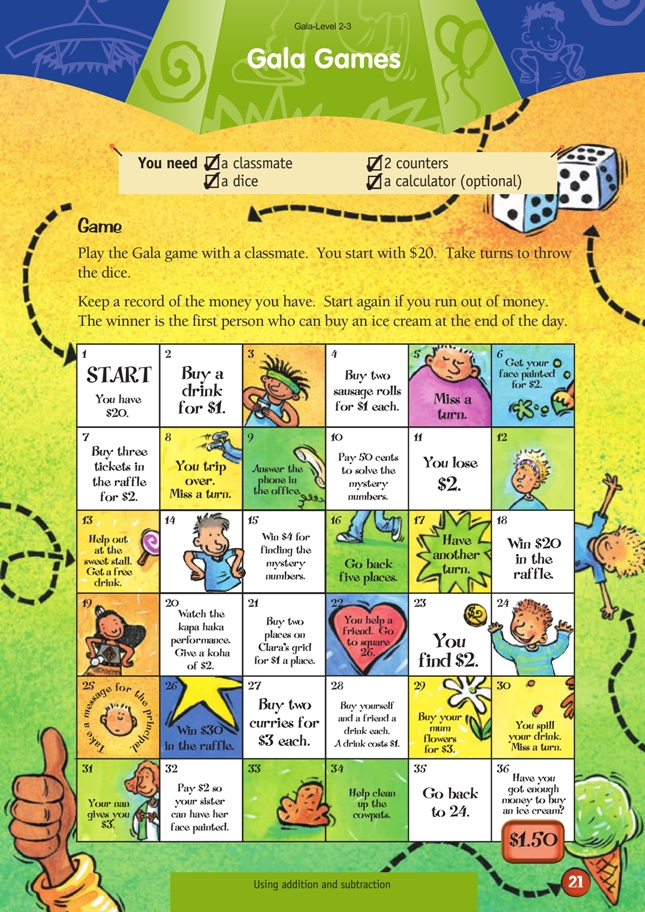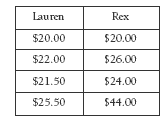This is a level 2 number activity from the Figure It Out theme series.
A PDF of the student activity is included.
Click on the image to enlarge it. Click again to close. Download PDF (412 KB)
use addition to solve money problems
A dice, 2 counters
FIO, Level 2-3, Theme: Gala, Gala Games, page 21
A calculator (optional)
This is a game of chance designed to give the students practice adding and subtracting small amounts of money while keeping a running total. In particular, it can give the students excellent experience in:
• calculating mentally (with partners checking calculations)
• using the memory function of a calculator.
Some students may need help to interpret the problems, particularly where more than one item is asked for. Encourage the students to read carefully and identify the relevant information for each calculation. For example, square 28 says “Buy yourself and a friend a drink each.”
The students could use tables to keep a running total. For example:
or
Ask the students to play at least one game keeping a running total in writing and using the memory function of a calculator. For example:
Key in 20 , M+ , 4 , M+ , 2 , M– ... MRC .
This shows the memory key in actions, and they have a paper record of what happened in the calculator memory. When they press MR or MRC at the end of the game, they can only buy an ice cream if the total they state from mental computation is the same as that in the display.
The game can be made easier by having the students work physically with toy money. The game can be made more challenging by adding a zero to all the money amounts (or other adjustments).
The game can be further developed by giving each student a square grid on which to design their own version of the game, to be swapped with classmates and put on a maths table.
Some students may run out of money. If this happens, as the rules state, the student must start again. You could ask the students to keep a record of how often this happens and how much money they have at the end of the game. After many students have played the game, you could use this data to discuss the following:
• In 10 games, how often do you think you could afford an ice cream?
• How much money on average would you expect players to have at the end?
• How likely are you to run out of money during the game?
Answers to Activity
Game


